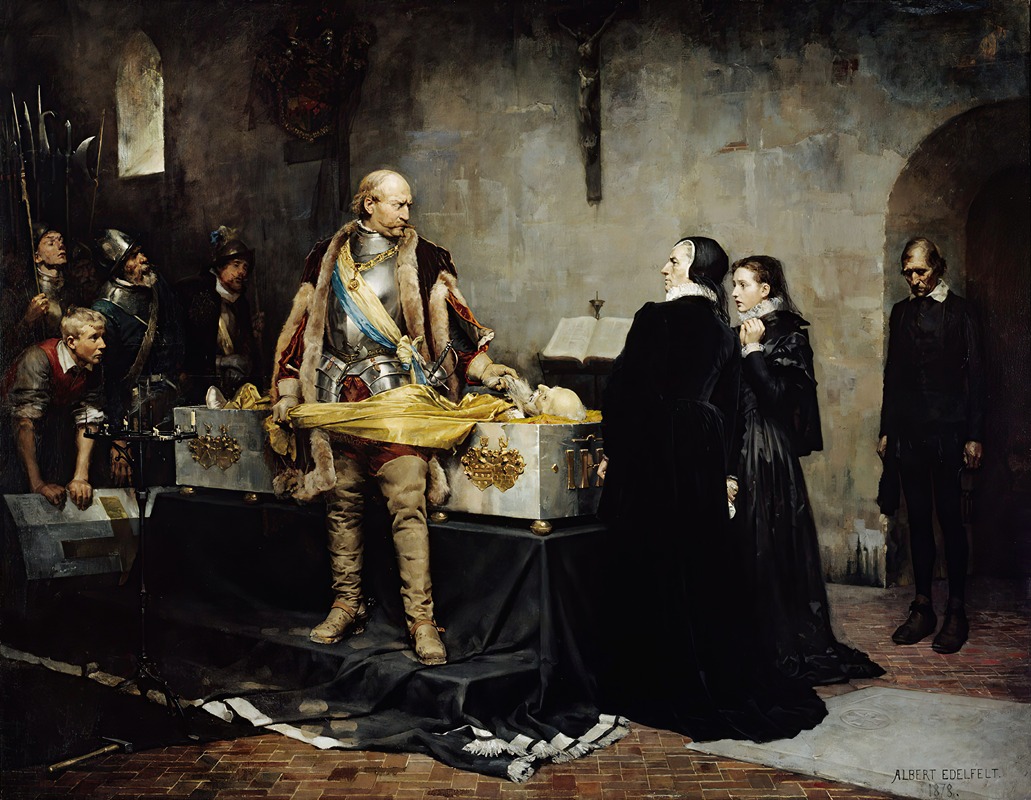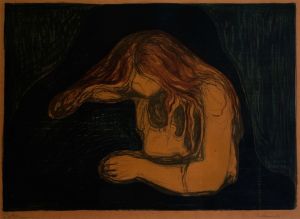
Duke Karl Insulting The Corpse Of Klaus Fleming
A hand-painted replica of Albert Edelfelt’s masterpiece Duke Karl Insulting The Corpse Of Klaus Fleming, meticulously crafted by professional artists to capture the true essence of the original. Each piece is created with museum-quality canvas and rare mineral pigments, carefully painted by experienced artists with delicate brushstrokes and rich, layered colors to perfectly recreate the texture of the original artwork. Unlike machine-printed reproductions, this hand-painted version brings the painting to life, infused with the artist’s emotions and skill in every stroke. Whether for personal collection or home decoration, it instantly elevates the artistic atmosphere of any space.
Albert Edelfelt's painting "Duke Karl Insulting the Corpse of Klaus Fleming" is a significant work of art that captures a dramatic moment from Finnish and Swedish history. Painted in 1878, this artwork is a vivid depiction of a historical event that took place during the late 16th century, a period marked by political turmoil and power struggles in the region.
The painting illustrates an incident involving Duke Karl of Södermanland, who later became King Karl IX of Sweden, and the corpse of Klaus Fleming, a prominent Finnish nobleman and military leader. Klaus Fleming was a staunch supporter of King Sigismund III Vasa, who was the king of both Sweden and Poland. The political landscape at the time was fraught with tension, as there was a power struggle between supporters of King Sigismund and those who backed Duke Karl, who opposed Sigismund's rule in Sweden due to his Catholic faith and his absentee kingship, as he resided primarily in Poland.
Klaus Fleming, as Governor of Finland, was a key figure in maintaining control over Finland on behalf of King Sigismund. His death in 1597 marked a turning point in the conflict. According to historical accounts, shortly after Fleming's death, Duke Karl seized the opportunity to assert his power in Finland. The painting captures the moment when Duke Karl, upon entering Turku Castle, is said to have insulted Fleming's corpse. This act was emblematic of the deep animosity and the intense power struggle between the two factions.
Edelfelt's painting is renowned for its dramatic composition and historical accuracy. The artist meticulously researched the historical context and the attire of the period to ensure authenticity in his depiction. The painting shows Duke Karl standing over the coffin of Klaus Fleming, with a contemptuous expression, highlighting the tension and hostility of the era. The setting within the castle and the presence of other figures in the painting add to the narrative, providing a glimpse into the historical and social dynamics of the time.
Albert Edelfelt, a Finnish painter, was known for his ability to capture historical scenes with great detail and emotional depth. His work often reflected his interest in Finnish history and national identity, and "Duke Karl Insulting the Corpse of Klaus Fleming" is no exception. The painting not only serves as a historical document but also as a reflection on the themes of power, loyalty, and betrayal.
This artwork is part of the collection at the Ateneum Art Museum in Helsinki, Finland, where it continues to be an important piece for both its artistic merit and its portrayal of a pivotal moment in the history of Finland and Sweden. Through this painting, Edelfelt has provided a window into the past, allowing viewers to engage with the complex historical narratives that have shaped the region.


















